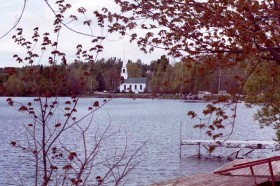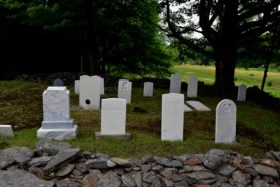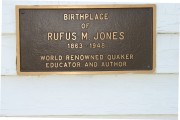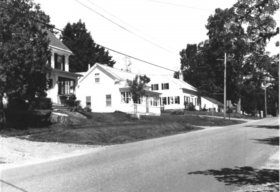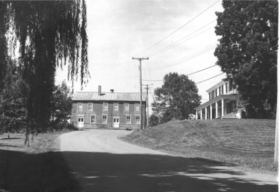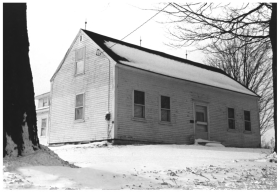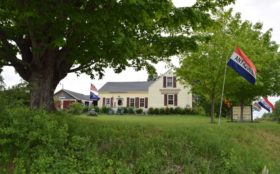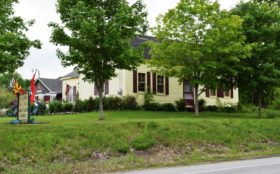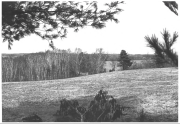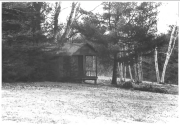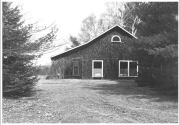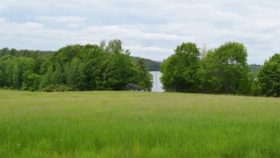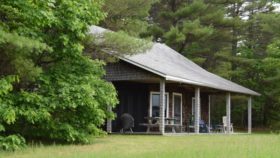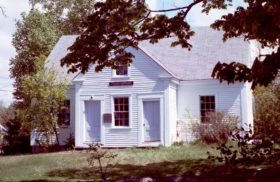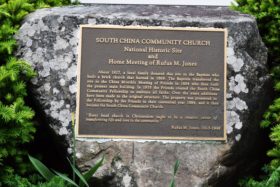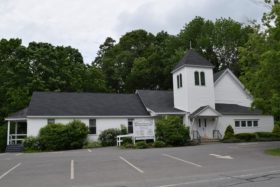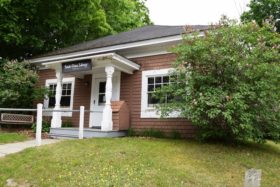
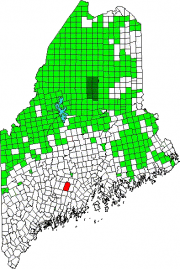
Location Map For China
| Year | Population |
|---|---|
| 1970 | 1,850 |
| 1980 | 2,918 |
| 1990 | 3,713 |
| 2000 | 4,106 |
| 2010 | 4,328 |
| Geographic Data | |
|---|---|
| N. Latitude | 44:28:43 |
| W. Longitude | 69:31:04 |
| Maine House | District 79 |
| Maine Senate | District 15 |
| Congress | District 1 |
| Area sq. mi. | (total) 56.8 |
| Area sq. mi. | (land) 49.9 |
| Population/sq.mi. | (land) 86.9 |
| County: KennebecTotal=land+water; Land=land only | |
[CHI-nah] a town in Kennebec County, incorporated on February 5, 1818 from parts of the towns of Harlem, Fairfax (now Albion), and Winslow.
China was originally part of the Plymouth Patent. The area that became the town of China was first surveyed in 1773-1774; the first settlers arrived in the summer of 1774.
A portion, first known as Jones Plantation, was incorporated in 1796 as Harlem. Harlem was annexed by China in 1822. In 1829 China ceded some land to Vassalboro.
George Varney commented on the villages of China in 1886:
At Weeks Mills on the stream [Sebasticook River] are a grist mill, lumber, and two shingle mills. At Palermo post-office, or Branch Mills, are a lumber and grist mill.
The town has a cheese-factors, tannery, several small boot and shoe factories, etc. The centres . . . in the town other than those already mentioned, are China Village, at the north, the seat of China Academy, and South China, beautifully situated at the south end of a lake.
China Lake, around which Quakers and Baptists settled in the early 19th century, dominates the community and its history as a recreational center. The view above left is of the Baptist Church at the east end of the lake.
Elizabeth Vining captured a verbal portrait of the village of South China in the late 19th century:
Before the fire of 1872, which destroyed some twenty-two buildings as well as the avenue of glorious elms, it had been a beautiful village. Though rebuilt after the fire, it was never again so prosperous or so comely. The new houses belonged to a less happy period of architecture than those they replaced; maples grew where the elms had been. . . .
Four roads met in the center of South China: the roads to Augusta, to Belfast, to Bangor, and to Damariscotta. But the highways of those days were narrow, hilly, and rough, and even the twelve miles to Augusta were formidable.
The village was self-contained; it made its own shoes; there was a carriage shop as well as a smithy; before the fire there was a bank. Town meeting twice a year was a great event, and the issues were thrashed out for months before and after by the cracker-barrel philosophers in the grocery store.
The town is the birthplace of U.S. Representative John E. Nelson. Rufus M. Jones was a Quaker educator and author of many books on education, philosophy and religion. His birthplace still stands in South China.
Form of Government: Town Meeting-Select Board-Manager.
Additional resources
Ebert, Fred R. A Land Use Study of China, Maine. 1973. (Thesis (M.S.)–University of Maine, Farmington, 1973)
Hinshaw, David. Rufus Jones: Master Quaker. New York: G. P. Putnam’s Sons, 1951.
Dowe, Milton E. Palermo, Maine: Things That I Remember in 1996. Palermo, Me. Published by the Palermo Historical Society. 1997.
Jones, Rufus Matthew. Addresses about South China. China, Me. South China Library Association. 1955 (China, Me. Commercial Dept., Erskine Academy)
Jones, Rufus Matthew. A Small-Town Boy. New York. Macmillan. c1941.
*Maine. Historic Preservation Commission. Augusta, Me. Text and photos from: http://pdfhost.focus.nps.gov/docs/nrhp/text/xxxxxxxx.PDF and http://pdfhost.focus.nps.gov/docs/nrhp/photos/xxxxxxxx.PDF
Abel and Rufus Rufus Jones House: 64000316.PDF
China Village Historic District: 77000069.PDF
Eli and Sybil Jones House: 84001376.PDF
Pendle Hill: 64000316.PDF
South China Meeting House: 83000459.PDF
South China Public Library: 64000316.PDF
The Pond Meeting House: 64000316.PDF
**”South China Public Library.” http://www.southchina.lib.me.us/Library/Welcome.html (accessed March 15, 2015)
Town of China. New York. H. W. Blake & Co. 1892.
Varney, George J. A Gazetteer of the State of Maine. 1881. pp. 175-176.
Vining, Elizabeth Gray. Friend For Life: The Biography of Rufus M. Jones. Philadelphia: J. B. Lippincott Company. 1958.
National Register of Historic Places – Listings
China Village Historic District
[Maine Route 9; Neck Road] The land on which China Village now stands was, in the 18th century, part of Albion; in 1816 the northern boundary of Harlem was moved to about the middle of the present village, and after 1818 the whole village was within China. For some years after that it was called “the village at the head of the pond” and it is uncertain when the present name first came into use. By 1827 the main road from Portland to Bangor ran though China Village.
 The China Village Historic District represents the rural community that flowered in the years following Statehood in 1820. The villagescape, although containing a small proportion of recent elements, retains the fabric and flavor of Maine’s 19th century era of prosperity. China Village can be grateful to its relative remoteness for its survival as a preserved district.*
The China Village Historic District represents the rural community that flowered in the years following Statehood in 1820. The villagescape, although containing a small proportion of recent elements, retains the fabric and flavor of Maine’s 19th century era of prosperity. China Village can be grateful to its relative remoteness for its survival as a preserved district.*
Abel Jones House and Rufus Jones Birthplace
[off U.S. Route 202] Rufus Jones, born in his father’s (Abel) house, was one of the principal American Quakers. He was raised and spent much of his productive life in China. Properties closely associated with him in and around the village of South China include the Abel Jones House, The Pond Meeting House, the South China Meeting House, the South China Public Library, and “Pendle Hill.”
The Abel Jones homestead is a typical Maine Federal farmhouse, with a long 1½ story ell projecting from the rear wall. The main section is perpendicular to the road. The wall of the ell masked from the road is shingled; all other elevations are clapboarded. In the late 19th century, the house was reoriented toward the dooryard and road. The interior was changed to suit the new orientation. A new door was given a simple Queen Anne canopy. All rooms are simply decorated with wallpaper applied over plaster. A few rooms retain simple Federal mantle pieces, one of which is an exact copy of the original that was somehow destroyed. All floors are highly-polished pumpkin pine. A large barn and small shed of late 19th-early 20th century construction stand behind and to one side of the ell.* [See photos above.]
Eli and Sybil Jones House
[Dirigo Corner South China] Eli (1807-1890) and Sybil (1808-1873) Jones, were internationally known Quaker missionaries and lecturers who, beginning in 1840, for thirty years made many trips to Canada, the British Isles, Scandinavia, Europe, Egypt, the Middle East and Liberia. They repeatedly crossed the Atlantic by sail and steam; they traveled the Norwegian coast in an open boat, portaging from one fiord to the next, and rode donkey-back through parts of Syria and Lebanon.
They shared their beliefs with people from all walks of life. The president of Liberia received them; in Beirut, Sybil spoke through an interpreter to women in harems; they addressed religious and educational groups, hospital patients and prison inmates. Despite a debilitating back problem, Sybil was often the leader while managing to bear 5 children between 1835 and 1850. Eli was elected to the Maine House of Representatives in 1854 and served as principal of Oak Grove, a Quaker preparatory school, from 1857-1860. He was an early and staunch supporter of equality for women. Rufus Jones, his nephew, often wrote about the importance of his early association with Eli.* [Frank A. Beard photo]
Pendle Hill
[off U.S. Route 202 overlooking China Lake.] “Pendle Hill,” Rufus Jones’ summer getaway, consists of a shingle-style cottage, a one-room log cabin he built himself, and a multi-acre lot extending to the shore of China Lake.
The grounds include the hill’s crest with a dramatic view of the lake, a long row of pines that separates the property from an adjoining one, a downward sloping expanse of meadow, and a wooded slope at the foot of the meadows and along the shore of the lake. The cottage is a 1½ story shingle-style building whose pitched main roof and porch roof adjoin. The porch is a broad deck defined by thin shingled posts.
Jones, in his autobiography Small Town Boy, showed an intimacy with nature, the physical village and the surrounding landscape. The first thing he recalled finding beautiful was China Lake, over which he later built Pendle Hill: “… if this glorious lake had not been there my earthly story would have been quite different.”* [Gregory K. Clancey photos]
The Pond Meeting House 1807-1907
[on U.S. Route 202 about three miles north of South China Village] The 1807 meeting house is a modest but pleasing post and beam structure, without ornament or stylistic claim, except for concern with regularity and proportion characteristic of Federal buildings. The main portion is a 1½ story rectangle with a high pitched roof. Two doors are flanking a single window. [See photo above.]The main portion is one large room with exposed beams and plastered walls but was originally divided into equally-sized rooms by a shutter-door attached to the ceiling with iron hooks. One corner of the room was enclosed by temporary partitions in 1930 to form a kitchen. The original pews have been removed.
The floor-boards as well as the roofing timbers are hand hewn. Pine is used throughout. A small chimney in the center of the roof ridge no longer connects with a fireplace. The roof is asphalt-shingled. In the 1960s it was used as part of a religious summer camp.*
South China Meeting House
[in the center of the Village of South China] This meeting house was originally a one-room, 1½ story pitched roof structure with gable end to the street. Although constructed in 1884, the building retained the simple, almost Federal detailing that characterized South China’s buildings well into the Victorian period. It was fronted by a small enclosed vestibule and had three doubled rectangular windows on each long side. The building was clapboarded and had a cedar-shingled roof. Around 1900 the vestibule was enlarged to cover the length of the gable end, and a modest tower with hipped roof and doubled arched louvers was placed at its west end, among other changes. A few additions were made in the earth 20th century.
The exterior has been enclosed by vinyl siding, and the roof asphalt- shingled. A canopy has been added above the main entrance in the tower’s base, and the casement windows have been replaced by single weatherized panes. The interior of the original section, which still serves as the meeting room, has been remodeled. In the late 1970’s a stained glass window was installed.* [Gregory K. Clancey photo] The meeting house has been renamed to South China Community Church. [click on church photo to enlarge and clarify]
South China Public Library
[in the center of South China Village] This building is a simple frame square, one-and-one-half stories with hipped roof and shingled walls. The door is centrally located in the facade and flanked by large windows. A portico surrounds the entrance, and is supported by two large, turned spindles. Small windows punctuate the sides and rear, and a small vestibule fronts the dooryard. The interior has a large main room and a smaller office adjoining the rear wall. All woodwork is simply finished in pine. A large brick fireplace with pink morter stands at the rear wall of the main room. All wall surface is hidden by bookshelves. The roof beams are exposed.The South China Library Association, founded in 1830, is “the oldest continuously operating library in the State of Maine.”** The building was constructed in 1900, with lumber and labor provided by the townspeople. The Association incorporated in 1912. Rufus Jones served as library president 1919-1948, the only civic activity with which he was associated.*




